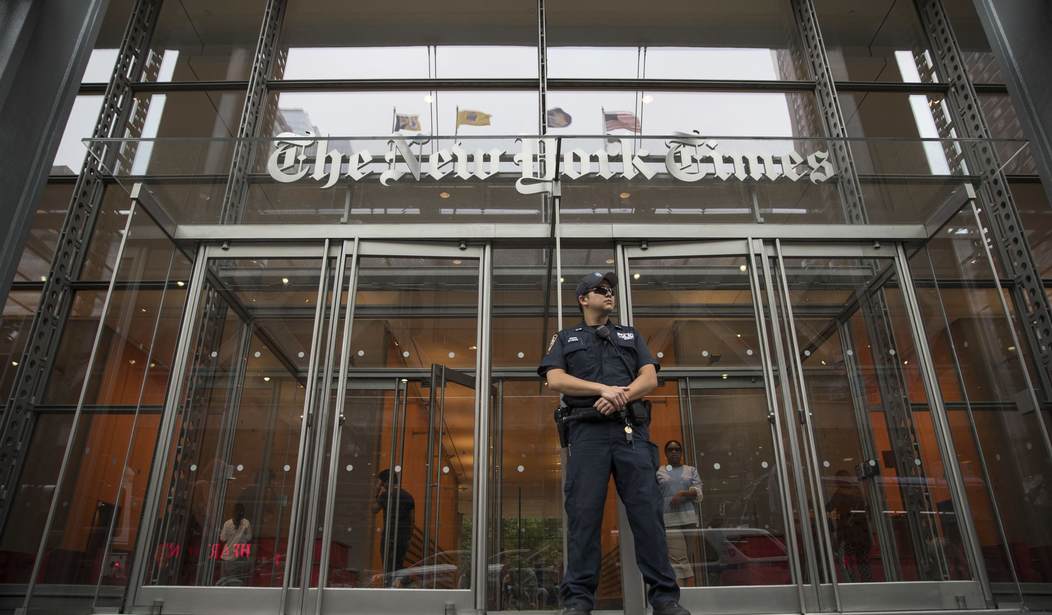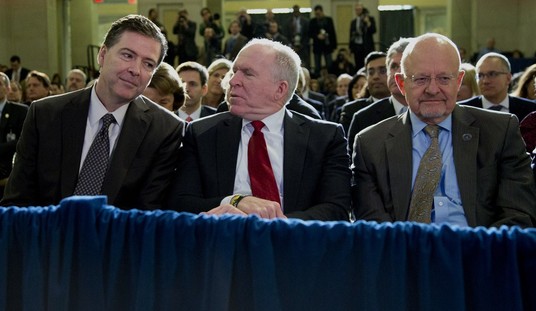If the New York Times reports it, then it must be true because it’s America’s “newspaper of record” that publishes “all the news that’s fit to print,” right? To be a New York Times reporter or editor is the pinnacle of career achievement for journalists around the world.
Not anymore.
It was the Times that first reported that Capitol Hill Police (CHP) Officer Brian Sicknick died as a result of being hit in the head with a fire extinguisher during the January 6 riot at the U.S. Capitol.
Every news organization in America and reporter covering Congress (yes, including me) echoed that story, which, according to the archived version held by Snopes, reported early January 8 the following:
The circumstances surrounding Mr. Sicknick’s death were not immediately clear, and the Capitol Police said only that he had “passed away due to injuries sustained while on duty.” At some point in the chaos — with the mob rampaging through the halls of Congress while lawmakers were forced to hide under their desks — he was struck with a fire extinguisher, according to two law enforcement officials.
And why wouldn’t other news organizations repeat the story: After all, it’s the New York Times and it has “two law enforcement officials” as sources. New York Times. Two sources. In law enforcement. The Old Grey Lady. Gotta be accurate, right?
Wrong.
After months of delay, the medical examiner for the District of Columbia finally made public the true cause of Sicknick’s death — the man had two strokes and died of natural causes.
In reporting the medical examiner’s conclusion two days ago, the Associated Press — the other “Bible” of American journalism — offered this observation:
But the determination of a natural cause of death means the medical examiner found that a medical condition alone caused his death — it was not brought on by an injury. The determination is likely to significantly inhibit the ability of federal prosecutors to bring homicide charges in Sicknick’s death.
I’ll return to this AP graph shortly. But let’s get honest about what the Times now owes, not just to its millions of readers, but to every journalist in America who repeated the Times fire extinguisher claim, and to every American citizen who wants to know the truth about the events of January 6.
The Times has “updated” its original story to reflect the successive revisions to the original, including the claim that maybe it was bear spray that killed Sicknick. But nowhere has the Times published the apology it owes America.
It’s not as if there is no precedent for such an apology. Google “New York times apologizes for Iraq coverage” and the first item in the results takes you here. Note that the editors then did not apologize.
This time they should specifically apologize and do so in detail. Beginning with the names of the two law enforcement sources the Times claims were behind the fire extinguisher lie.
Understand something here when I say that: I’ve been an investigative editor and reporter for years, and I empathize with Times editors and reporters concerning the challenges that come with sorting out fact from fiction in the nation’s Capitol.
One thing you don’t do, ever, as a journalist is burn credible sources. These two “law enforcement” sources aren’t that. They should be identified in public and held accountable. They told the nation’s most imminent newspaper a lie, knowing full well that it would be repeated as fact throughout the media.
But it’s not just the Times that has a stake here. The Department of Justice can forget about charging Julian Khater of Pennsylvania and George Pierre Tanios of West Virginia — linked on video to the bear spray element of the story — with any criminal responsibility for Sicknick’s death. Assault on a police officer, maybe, but not causing his death.
Now let’s return to that AP graph quoted above: What about this sentence: “The determination is likely to significantly inhibit the ability of federal prosecutors to bring homicide charges in Sicknick’s death.”
Hold on. Why the “inhibit … homicide charges” qualification? Sicknick did not die in a homicide, so where was the desk editor to explain that obvious fact to the thoughtless reporter? Yes, editors can be pains in the a– for reporters, and that’s a good illustration of why.
That sentence highlights why the American journalism profession must subject itself to a wholesale, comprehensive reevaluation of its conduct, self-understanding, and ethics since 2016 and before. The fire extinguisher lie is not the only lie the media has uncritically reported over and over in recent years.
Just in the Russiagate scandal alone, the national media, led by the Times, repeatedly reported a host of untruths proceeding from the unquestioned claim that President Donald Trump and key officials of his campaign were active co-conspirators with Russia in stealing the White House in 2016.
When does America get the apologies due on that one? And, as Issues & Insights ask on its editorial page, what about that discredited story that Trump knew Russia was paying bounties for dead GIs in Afghanistan but did nothing about it?
The list of discredited stories is lengthy and shameful. No wonder our credibility with the American public is in tatters.
The Founders gave us the precious gift of constitutional protection in return for upholding a public trust — getting the facts and thereby holding public officials accountable. And look what we’ve done with that public trust.
I’ve been in the newsroom for more than three decades, won awards along the way for my reporting and editing. Great reporters I’ve managed have forced corrupt government officials to resign, exposed Chinese spies, and focused the hot lights of public accountability on all kinds of official venality, apathy, and waste. I love journalism and I admire honest journalists of all ideological stripes.
But it’s time we hold ourselves accountable, before our readers’ patience and willingness to forgive is gone forever.










Join the conversation as a VIP Member